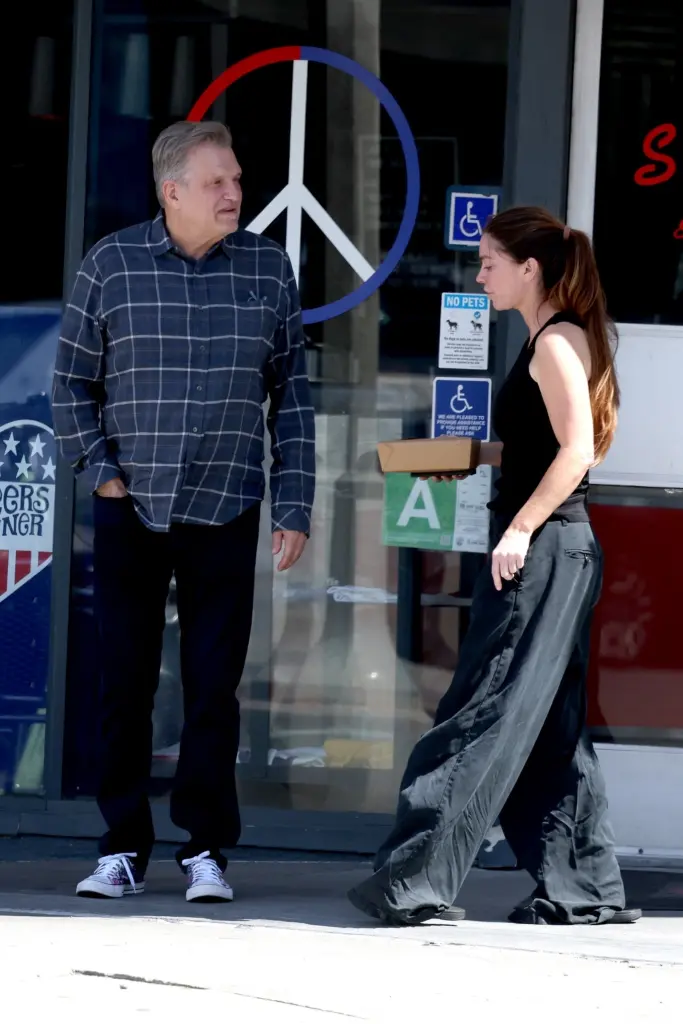Entertainment
Mac Miller’s “Self-Care”: A Reflection On States Of Mind

Throughout his career, and by extension life, Mac oscillated between different states of mind; sometimes depressed and sometimes optimistic, these moods were reflected directly in his music. This isn’t a characteristic that is unique to him, we all feel differently depending on the day, depending on the clouds in the sky, depending on the social circumstances that surround us. But we don’t all lay these emotions bare in a soundtrack, one that encapsulates the exact dichotomy of these opposing moments in time.
From the cheery I Love Life, Thank You, was born the experimental drug use that gave us Macadelic; from the drug-addled Faces was born the upbeat and positive GO:OD AM; from the trippy, distorted Run On Sentences Vol. 2 was born the serene and humble ode to women, The Divine Feminine.
Following the release of The Divine Feminine in 2016, Mac took a brief hiatus, without dropping another album until 2018’s Swimming, which would become his final release before his death. Despite no musical piece between the two projects, Mac’s mind was definitely in a different place post-break-up with Ariana Grande; and that same month, earning a DUI. It is these little pieces, the fragments of Mac that were visible to the public at the time, that painted a picture of someone who appeared to be struggling. He kept a low profile, opting out of social media and the interactions therein, as he later explained to Zane Lowe right before Swimming arrived. This was for the benefit of a clear mind and the space that brings. Social media is at once ego stroking and destroying, as Mac himself said. “How am I even gunna have room for that?”, he asked, referencing the constant weight on his shoulders, that comes from reading everyone else’s thoughts and emotions about him.

Mac Miller at his “Swimming” album listening party, 2018 – Shareif Ziyadat/Getty Images
“When I put The Divine Feminine out, that was the first time I had a clear head in 10 years,” Mac stated in this same interview. “I lived a certain life for 10 years and faced almost no real consequence at all. I had no version of the story that didn’t end up with me being fine.”
It’s chilling, foreboding and altogether upsetting, when you reflect back on any of the multiple statements Mac made about death, drugs or both . In the 2016 documentary with The Fader, Mac made it clear that he did not want to die as a result of his drug intake: “I’d rather be the corny white rapper than the drugged-out mess that can’t even get out of his house. You don’t go down in history because you overdosed.” A year prior, he echoed this sentiment similarly in an interview with Billboard, where he referred to the final song on Faces: “‘Grand Finale’ was supposed to be the last song I made on earth. I don’t feel that way as much anymore.”
This see-saw of thoughts and actions; drifting from wanting to do drugs to wanting to be sober, is genuine in it’s humanity. It is a reflection of Mac Miller’s life, much in the same way each album he released is also a study on the current stop in his timeline. Mac’s nature was honest, whether the honesty was wrapped up in drugs or not, it was authentic in its intention. Even when Mac would hit his lows, he would do his best to pick up the pieces, and put himself back together. But, he did not shy away from the lows, he invited them in, and perhaps even reveled in them for a time being, which allowed him to create some of the music he did. In the aforementioned Fader documentary, Mac says something that speaks directly to his catalogue of music and him as a person: “I wanna be positive, as a human being and through music, but I also wanna have low points. It’s like an essential, man, there’re moments and they get dark. Because nothing is all good.”
So, following his break-up with Ariana and his DUI– this was a dark moment. Yet, as far as we could tell, he was getting himself out from under this bleakness when he released the song “Self-Care” on July 13, 2018, a month ahead of Swimming. Since Mac had been off of social media, this was essentially his way of letting us all know where his mind was at right now, that he was okay: “You get the itch to tell people, ‘don’t worry I’m okay’, ‘don’t worry I’m okay’,” he said in his Zane interview.

A memorial for Mac Miller at Fairfax and Melrose – Katharine Lotze/Getty Images
Despite his death, and the idea that, okay, maybe he wasn’t giving his body and mind as much self-care as he truly should have– we need to remember “Self-Care.” It is perhaps one of Mac’s most important songs, in its simple concept. Despite his death, we can find solace in “Self-Care,” and surely, this is what Mac wanted. Despite his death, the message that’s tangled up into “Self-Care” is still profound.
The comfort we find in “Self-Care” isn’t just within the lyrics, but the production, too. Watery synths are cleansing for the mind, while Mac’s flow, wobbling in a few different directions, mimics this idea. The second half of “Self Care” takes us into “Oblivion,” a firmer, but still groovy end to the record that seems to stabilize the listener following the mind-purifying first half.
Mac confirms it’s that time again, a time of reflection and changing states of mind: “Yeah, I been reading them signs /I been losin’ my, I been losin’ my, I been losin’ my mind,” before later confirming he’s had a change of perspective:
“Didn’t know what I was missing, now I see a lil’ different I was, thinking too much, got stuck in oblivion.”
In the music video, Mac finds himself in a wooden box, with nothing but a knife and a cigarette. Perhaps a reflection of his own self-isolation prior to the album, a concerted effort to heal himself– but he leaves us with a disquieting feeling by the time the music video ends and he’s carved “memento mori” (“remember death”) into his coffin.
It doesn’t end like that, though. He begins to punch the box, pushing for his own release. When he finally breaks through, we see his head slowly emerging from a pile of dirt, at the same time as the song wanders into “Oblivion.” We think, then, he’s found his freedom, his release– but as soon as he’s on his feet, atop the pile of dirt, an explosion topples him right back over.
There’s a lot to unpack here, but at its most basic, we can look at this collection of scenes, intertwined with the song itself, as a reflection of personal struggles– Mac’s own, or otherwise– the whole world can relate. We cannot let these personal struggles consume us whole, bury us, we need to try, try to fight them. Even in that instance, that we do overcome and break out of our own “wooden box,” we may face yet another new, unknown obstacle. But, we need these obstacles, we need the lows just as much as we need life’s highs. Without the lows, how would we even be able to identify the highs? The contrast is necessary, otherwise, we are in a state of neutrality (and what would life be, like that?).
Mac understood this so well, and it seemed to envelope his personal understanding of what ‘self-care’ means. At a surface level, we might think self-care is a spa-day or meditation. But it’s more than just that, if we’ve learned anything not only from Mac’s music but the way he lived his life. Taking care of one’s self is a forward motion, a constant pursuit of life’s ups and downs, even when crestfallen. This is self-care from a bird’s eye view rather than the type of self-care that might be wrapped up in minute day-to-day details, such as the spa day, taking fifteen minutes to read a book, or meditation. However moving forward in life– evolving, growing, as it were, this is taking care of one’s being beyond just a physical nature or any immediate emotional gain. While Mac Miller’s journey may have been cut short in a haphazard but non-self-imposed way, “Self-Care” serves as an important reminder that Mac, at his core, was someone who wanted to do better, and be better, as a human.
Entertainment
Drew Carey, 66, Enjoys Lunch Date with 37-Year-Old OnlyFans Star Niki Skyler in L.A.

Having survived one of the darkest chapters of his life, Drew Carey appears to be finding a little light again and perhaps even a second chance at love.
The 66-year-old Price Is Right presenter, comic, and TV legend has been seen dining with 37-year-old content creator and OnlyFans model Niki Skyler at the hot retro diner Swingers Diner in Los Angeles. The sighting, which happened on a leisurely Thursday afternoon, has fans and entertainment observers alike abuzz: Is Carey finally unsealing his heart, five years after the heartbreaking death of his ex-fiancée, Amie Harwick?
Casual and smiling, Carey appeared at ease in a simple gray tee and jeans. Skyler, who’s developed a steady online following over the past couple of years, caught eyes in a soft-pink crop top, matching skirt, and oversized sunglasses. They talked closely while digging into burgers and milkshakes, laughing at one point as they exchanged fries and stories. While representatives for both Carey and Skyler haven’t confirmed any romance, it’s evident that there’s at least some chemistry.
In February 2020, Carey’s life was upended by a tragedy he couldn’t have imagined: the murder of his ex-fiancée, Dr. Amie Harwick, a therapist and high-profile advocate for victims of domestic violence in her Los Angeles home. The suspect was an ex-boyfriend of Harwick’s, and her death sent ripples not just through Carey’s personal life but through the entertainment world and mental health communities as well. Carey and Harwick had amicably separated the previous year, but the couple remained good friends. In the days after her death, Carey spoke openly about the heartbreak on his SiriusXM show, calling Harwick a “beautiful, positive force,” and saying her death is “something I’ll never truly get over.”
Friends said Carey withdrew from public life in the period that followed. Though he went on to host The Price Is Right with grace and professionalism, he mostly avoided the Hollywood social circuit and kept his private life tightly sealed. This is why this recent public outing with Skyler, relaxed, candid, and intimate, feels like such a big deal.
For those who are not in the know, Niki Skyler is new to the internet scene. She is an online content creator currently on OnlyFans and linking subscribers through social media. A mash-up of influencer, entrepreneur, and artist, Skyler has honed a following that appreciates her headstrong, body-positive, no-holds-barred approach to life. A Midwestern native, Skyler relocated to Los Angeles in her late twenties to work in modeling and independent media. She has starred in music videos and lifestyle campaigns and has turned to podcasting, too. Although her OnlyFans work has generated headlines, Skyler says her mission is empowerment: “I want to control my narrative,” she told a fan in a recent Q&A on Instagram.
Skyler’s relationship to Carey isn’t quite clear, whether the two crossed paths through mutual friends, a shared project, or just by chance. But those who witnessed their lunch date saw an ease between them that implied something more than a casual get-together. “They were kind of into each other’s company,” one onlooker said. “It didn’t seem like a publicity stunt or anything. They were simply two people enjoying a very good time.” It’s not unusual for Hollywood notables to fall in love in surprising locations and combinations. But this new chapter feels particularly poignant for Carey, whose career has included decades of stand-up, successful sitcoms, and dominance on daytime TV.
Carey is famous for his self-deprecating wit and down-to-earth disposition and has never been known for his high-flying romances. His relationships were mostly kept out of the news before Harwick. And that’s why fans are cheering for him now, hoping this moment of connection, even if just friendship, means something healing. “Drew deserves happiness,” a longtime fan said on Reddit after lunch photos circulated. “Given everything he’s been through, seeing him smile with someone again is nice.” And smile he did throughout lunch, Carey appeared genuinely happy, leaning in as Skyler spoke excitedly, shooting the occasional gesture, and pushing her hair behind her ear. The men lingered for almost two hours before stepping out of the diner together, toward the front door, and Carey was polite as ever, waiting for his partner to walk through first.
However, any relationship or even friendly outing between a mainstream TV personality in his 60s and a 30-something digital personality will surely raise eyebrows. But the reception to Carey and Skyler’s outing has mainly been positive, even refreshingly open-minded. The age difference? “It’s Hollywood,” one fan shrugged. “They’re both adults, and quite frankly, who cares, if they’re happy?” Others mentioned the difference between Carey’s traditional showbiz background and Skyler’s new-media presence. Their partnership is in many ways a clash of eras — one formed by network TV and old-school comedy, the other forged in the digital world of subscriptions, self-branding, and immediate fan connection. “Maybe that’s what makes them work,” as another observer hypothesized. “They’ve both created their own path and achieved success outside the things you would assume. That’s pretty cool.”
So far, neither Carey nor Skyler has commented publicly on their lunch date, and there has been no indication whether this is the start of a romance, a potential new friendship, or even a collaboration in the pipeline. However their connection is, one thing is for sure, the moment is landing. In an era of celebrity couples whose relationships are so heavily marketed and repackaged that they increasingly resemble an exercise in brand management, this one feels deliciously unpretentious, a low-key lunch between two people, no frills, no rush, no glitz, sprinkled with just enough intrigue to make everyone’s ears perk up. And for Carey, in particular, the timing could not be more significant. “He has always seemed to be a genuine, kind person,” said a fan. “Seeing him smiling once more, even for an afternoon serves as a reminder that healing is possible.”
So, are Drew Carey and Niki Skyler falling for each other or just enjoying a pal? Number three: Underneath the lights and the cameras, the grief and the healing, the fame and the reinvention, there’s always room for joy, laughter, and perhaps even love. And who knows? For a man used to spending years judging whether others’ guesses were the correct price, maybe he’s finally found something rivals have no formula for calculating: the cost is priceless.
Entertainment
Is Rihanna Secretly Shooting a Music Video in Paris?

Shocking news has done the rounds as speculative reports of Rihanna filming for a music video in Paris. There hasn’t been an official announcement, but given the new reports, it sounds like the City of Light will likely be the setting for her next artistic project.
Rihanna has dropped hint after hint of her comeback to music. Fans report that she is also nearing the finish line with her ninth fully realized studio effort, an album that will signal a departure with its continuity and freshness. Rihanna, over the years, through interviews, has additionally mentioned that she does not wish to write something that does not reflect her growth and evolution as an Artist, and the new album will not be “commercial or radio digestible” and it’s where her Artistry needs to be.
Check out this article: Why Rihanna’s Return to Music in 2025 Is the Comeback of the Decade
Paris has long inspired artists, and Rihanna is no exception. The city has become a central hub for her fashion projects, and there are rumors she might have her next Fenty Puma fashion show at Paris Fashion Week. Considering her deep connections to the city and its vibrant artistic milieu, it would be understandable if she selected Paris as the location for a new music video.
There are no official confirmations, but for several reasons, it seems like they might be shooting a music video in Paris. Rihanna’s creative team has been said to have been working in secret in Los Angeles to prepare for the return. Reviewed only by you, the best of the best 😉 She has seen a parallel increase in her new dancing persona as a singer, cementing these worlds together, which could lead to a crazy visual music video in Paris.
Adding fuel to that speculation is the potential of a world tour in 2025, rumored to be for Rihanna. A new music video shot in Paris would be a strong advertisement for her, reigniting fans’ eagerness and priming her return to the stage. And at a time when she is expected to make a big splash including a £32million deal with Live Nation and headlining prime festival slots for Glastonbury, the release of a new music video is perfectly timmed alongside this anticipated resurrection.
While fans are still waiting for confirmation, the prospect of a Rihanna music video filming in Paris could join the growing plot twists in her return story. Whether or not this is a strategic way to intertwine her music and fashion pursuits or an extension of her artistic vision, we are excited by the notion of Rihanna taking over the streets of Paris for a new video.
What do you think? Rihanna is filming a secret music video worldwide? If you found this article interesting, comment and let us know your thoughts!
-

 Artist Spotlight3 days ago
Artist Spotlight3 days agoHope Easton channels tropical mischief and charm in new single “SexyReady”
-

 Artist Spotlight3 days ago
Artist Spotlight3 days agoSweetCandy! declares self-love and defiance on “UGLY”
-

 Artist Spotlight3 days ago
Artist Spotlight3 days agoBluntBrad Jr. finds calm ambition in the laid-back shine of “It’s All Good”
-

 Artist Spotlight3 days ago
Artist Spotlight3 days agoLavien drops a heartfelt Afrofusion plea that sticks to the soul with “Nobody”
-

 Artist Spotlight2 days ago
Artist Spotlight2 days agoLana Crow turns challenges into a celebration with “Laugh With You”
-

 Artist Spotlight4 days ago
Artist Spotlight4 days agoCircleKSK ignites an anime-metal collision on “UnBreakable Turn” ft. Anya J
-

 Artist Spotlight4 days ago
Artist Spotlight4 days agoRecc explores nostalgia and inner freedom in “Where the Wild thYngs Are”
-

 Artist Spotlight4 days ago
Artist Spotlight4 days agoAnnaBelle Swift delivers gentle hope and gratitude with new single “Heaven Sent”













